

 |  |
Venn Diagrams showing sets/events $A$, $B$, and $C$ are shown. Use complements, unions, and intersections to describe each of the sets/events indicated in green.
(a)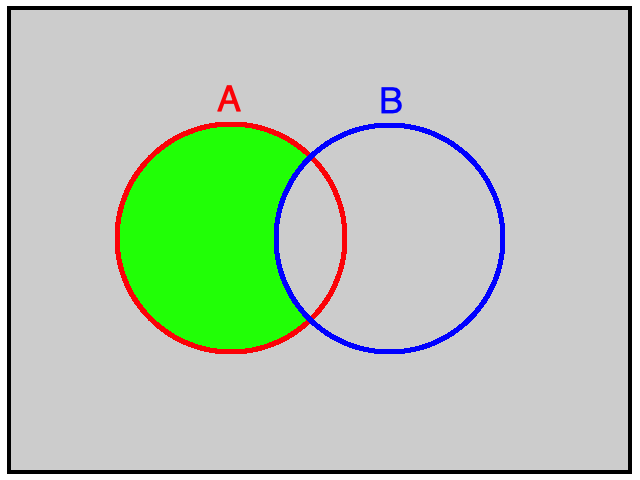 (b)
(b)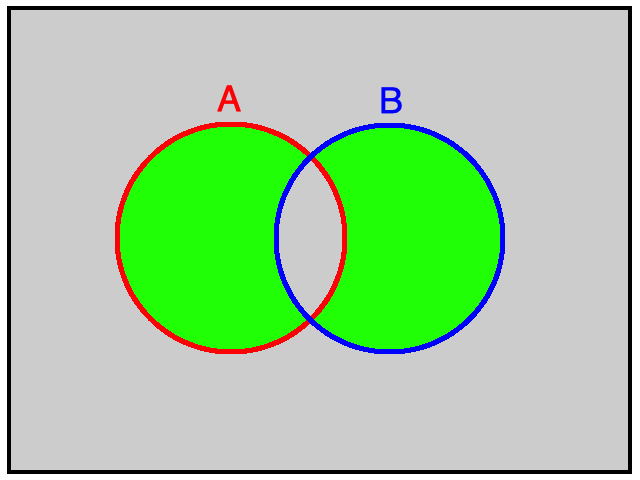
(c)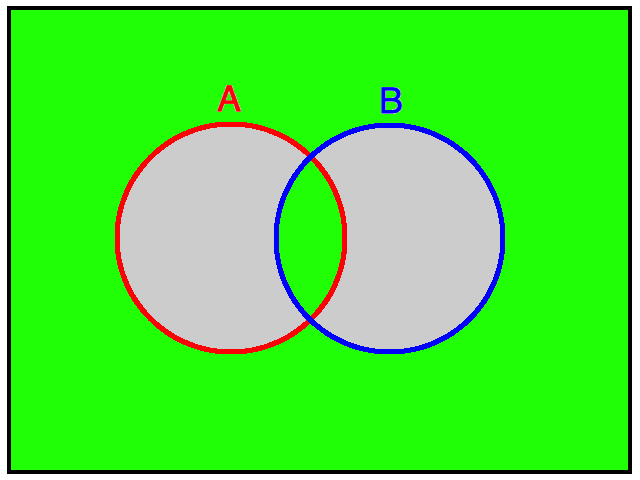 (d)
(d)
(e)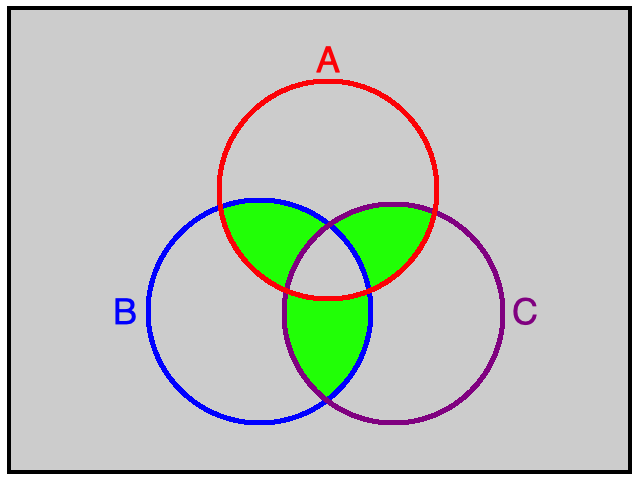 (f)
(f)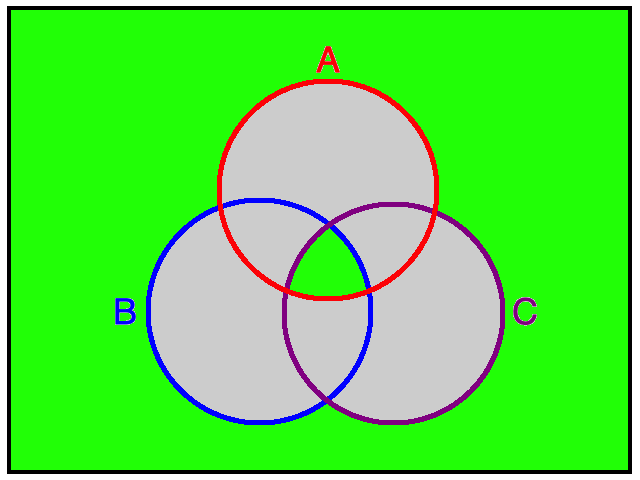
Answers vary, but the following work:
$A \cap \overline{B}$
$(A \cap \overline{B}) \cup (\overline{A} \cap B)$
$(A \cap B) \cup (\overline{A \cup B})$
$A \cap (B \cup C)$
$[(A \cap B) \cup (B \cap C) \cup (C \cap A)] \cap \overline{A \cap B \cap C}$
$\overline{A \cup B \cup C} \cup (A \cap B \cap C)$
Which of the following is not equivalent to either of the other two for given events $A$ and $B$?
(c) is not the same as the other two.
For the curious, the equivalence of the sets seen in (a) and (b) is known as De Morgan's law.
$A \textrm{ xor } B$ (read "A exclusive or B") is the event where exactly one of events $A$ or $B$, but not both, occurs. Develop a rule similar to the addition rule to find $P(A \textrm{ xor } B)$ given the probabilities $P(A)$, $P(B)$, and $P(A \textrm{ and } B)$.
$P(A \textrm{ xor } B) = P(A) + P(B) - 2 P(A \textrm{ and } B)$
Develop a rule similar to the addition rule for finding $P(A \textrm{ or } B \textrm{ or } C)$ (Hint: consider a Venn Diagram with 3 sets $A$, $B$, and $C$.).
$$\begin{array}{rcl} P(A \textrm{ or } B \textrm{ or } C) &=& P(A) + P(B) + P(C) \\ && - \,P(A \textrm{ and } B) - P(A \textrm{ and } C) - P(B \textrm{ and } C)\\ && + \,P(A \textrm{ and } B \textrm{ and } C) \end{array}$$